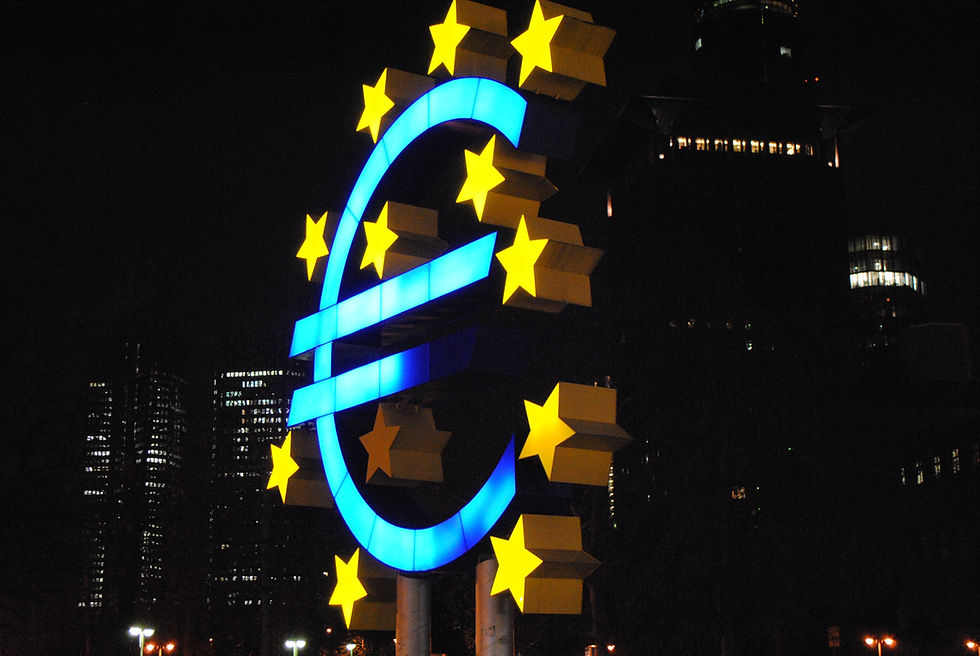
In May, inflation in the Eurozone experienced an increase, as reported on Friday. This development signals that the European Central Bank (ECB) still faces a challenging and uncertain path to achieving its goal of fully controlling price increases. The rise in inflation was more significant than expected, which suggests that the ECB’s journey to stabilize prices will not be straightforward and may involve several hurdles. The data highlights the persistent difficulties the ECB faces in its efforts to manage the economic environment and maintain price stability across the region.
Despite the larger-than-expected rise in inflation, it is unlikely to prevent the ECB from proceeding with its plan to reduce borrowing costs from their current record high in the coming week. However, this inflation increase may bolster arguments for pausing any further rate cuts in July and adopting a more gradual approach to reducing interest rates in the subsequent months. This approach is seen as a way to carefully balance the need to support economic growth while also keeping inflation under control, ensuring that any rate adjustments do not destabilize the economy.
“These numbers support those advocating for caution,” stated Dirk Schumacher, an economist at Natixis. Schumacher's comment reflects the sentiment that the latest inflation figures provide a stronger case for a cautious approach to monetary policy. The rise in consumer prices underscores the complexities the ECB faces and suggests that a careful and measured strategy is necessary to navigate the economic landscape effectively.
Consumer prices in the 20 countries using the euro rose by 2.6% year-on-year in May, according to Eurostat's flash estimate. This increase represents a further deviation from the ECB's target of 2%, following previous increases of 2.4% in the last two months. The persistence of inflation above the target level indicates ongoing price pressures within the Eurozone, which complicates the ECB's task of achieving price stability while fostering economic growth.
Economists surveyed by Reuters had anticipated that inflation would rise to 2.5%, driven in part by unfavorable comparisons to the previous year when Germany had subsidized rail travel, among other one-off factors. This subsidy had temporarily reduced transportation costs, making the year-on-year comparison less favorable and contributing to the higher inflation rate observed. Such factors illustrate the complexities involved in accurately predicting inflation trends and the impact of various temporary measures on the overall economic picture.
ECB policymaker Fabio Panetta, who is also the governor of the Bank of Italy, described the latest inflation data as neither positive nor negative. He reiterated his stance that the central bank could proceed with rate cuts while still maintaining measures to restrain the economy. Panetta's balanced view highlights the nuanced approach required in monetary policy, where rate adjustments must be carefully calibrated to support economic activity without exacerbating inflation.
A key measure of underlying inflation, which excludes volatile components such as food, energy, alcohol, and tobacco, rose to 2.9% from 2.7% in April. This core inflation metric is closely watched as it provides a clearer view of the underlying inflationary pressures within the economy, excluding items that can experience significant short-term price fluctuations. The increase in core inflation suggests that price pressures are becoming more entrenched, necessitating careful monitoring by the ECB.
Service sector prices, considered particularly important by some policymakers due to their reflection of domestic demand, rebounded to 4.1% from 3.7%. This rise in service prices is likely linked to larger-than-expected wage increases in the first quarter of the year, which have helped boost consumers' disposable income after years of wage growth lagging behind inflation. The improvement in disposable income suggests that consumers may have more spending power, which can contribute to higher service sector prices.
The ECB’s unprecedented series of rate hikes has played a significant role in reducing inflation, which had reached a peak of 10% in late 2022. This surge in inflation was largely driven by a spike in energy prices following Russia’s invasion of Ukraine, which disrupted global energy markets and led to higher costs. The ECB's rate hikes have helped to stabilize consumer inflation expectations, but they have also restricted credit, impacting borrowing and investment across the Eurozone.
Policymakers meeting next week are expected to adhere to well-communicated plans to cut rates despite growing market skepticism about a global trend of declining inflation. The planned rate cuts reflect the ECB’s commitment to supporting economic growth, but the persistence of inflation poses a challenge to this strategy. The central bank must balance the need to reduce borrowing costswith the risk of reigniting inflationary pressures.
"We believe that the latest inflation and wage data reduce the likelihood of consecutive interest rate cuts in July," said Diego Iscaro, head of European economics at S&P Global Market Intelligence. "However, we expect the ECB to cut rates two more times before the end of the year if the downward trend in inflation resumes in the third quarter as anticipated." Iscaro's comments reflect the cautious optimism that the ECB can proceed with its rate cut plans, provided that inflation continues to decline as expected in the coming months.
Following the release of the inflation data, German government bond yields, which serve as the benchmark for eurozone borrowing costs, reached their highest level in over six months. This rise in bond yields indicates market reactions to the latest inflation figures, reflecting increased expectations of higher borrowing costs. Currently, markets are pricing around 57 basis points of ECB rate cuts in 2024, with a 25 basis point cut expected in June and another by the end of the year. However, recent weeks have seen a gradual reduction in expectations for a third rate cut this year, reflecting ongoing uncertainties about the inflation outlook and the ECB’s policy responses.
01.06.2024

Comments